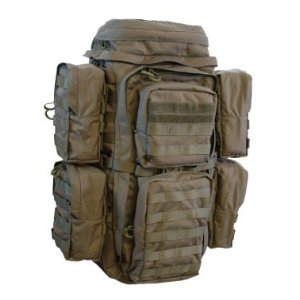I found this on the Missouri Department of Conservation's website. It is the simplest and best, that I have found. This is the exact way my Grandfather taught me, when I was a small boy.
Bushy-tails are just like other game—the meat on the table is only as good as the care taken in preparation.
Hair on cleaned game is a real turn-off to most people. You can avoid it when cleaning squirrels if they are soaked in water first. Just douse them in a bucket full of water or spray with a hose until the hide is soaking wet. This also works for rabbits.
The drawings below show how to proceed. After wetting them, pluck hair from the base of the tail as shown in step one. Hair removal makes it easier to do the next step.
Make a cut through the base of the tail bone as shown in step two, but not through the hide on the top of the rump. If you cut or pull the tail off you've got problems. Next, place the back legs on a board, stump or flat rock, place your foot on the squirrel's hind feet and cut toward the head about 1/2 to 1 inch, as shown in step three.
Then make a cut in front of each hind leg as shown in step four and pull up on the tail, peeling the hide toward the head until both front legs are exposed as shown in steps five and six. Swap ends with the squirrel, but avoid touching the flesh. Stand on the tail as shown in step seven and remove the hide from the back legs.
Next, pull the front legs through to the foot joint and cut the feet off. Remove one hind foot, then the head and the last hind foot.
Removal of entrails, steps eight and nine, involves a fair amount of blood, which is sticky. Saving this step for last prevents spreading hair over the skinned carcass.
Skinning a Squirrel

Step 1. Soak squirrel in water or spray and pluck hair from the base of the tail.

Step 2. Make a cut through base of tail bone; don't cut hide on top of rump.

Step 3. Place squirrel on board or stump and make small cut toward head.


Step 4, 5. Cut skin in front of hind legs as shown.

Step 6. Peel hide toward head, exposing both front legs.
Step 6. Cont'd

Step 7. Stand on the tail and pull hide down to back feet. Pull the front legs through and cut front feet off, then hind feet and head.


Steps 8 and 9. Make sure carcass is free of hair, then remove entrails and wash body cavity.
The last and finals step is the best—cooking and eating. Squirrels can be fried and served with biscuits and gravy, cooked and prepared with dumplings (a fine way to serve the older, tougher squirrels), or cooked, removed from the bone and prepared as squirrel pot pie, also a good way to prepare older squirrels.
Fried Squirrel
Frying squirrels is pretty simple. Just lay cut up pieces out on the counter top and sprinkle with salt, pepper and garlic powder on one or both sides, flour and fry in vegetable oil until golden brown.
Squirrel and Dumplings
Squirrel and dumplings takes a little more work. I usually season squirrels with salt, pepper, garlic and diced onion and pressure cook until the meat falls off the bone. Remove the meat from the bone and save the broth. I make dumplings (actually egg noodles) by using:
- 1 egg
- 1/2 cup water or cooled broth
- 1 teaspoon salt
Mix ingredients with enough flour to make a firm dough. Turn out dough on a board and knead in flour until dough is stiff. Then roll out thin and leave for about one hour. Slice into either a diamond or noodle shape and drop into boiling broth.
Additional water may need to be added to the broth to handle the dumplings when all the dumplings have been added. Put squirrel meat in broth and simmer over low heat for at leas 15 to 20 minutes.
Squirrel Pot Pie
Squirrel pot pie can be made by boiling or pressure cooking squirrels seasoned the same as in dumplings. Remove from the bone. make pie crust from your favorite recipe and line a small to medium square cake pan. Mix squirrel meat with one can of corn, one can of peas, one medium diced onion and one cup of diced cooked potatoes and pour this filling on top of your crust. Cover top of filling with another crust. Punch holes in the top crust and cook until crust is golden brown. Then serve and enjoy.



















